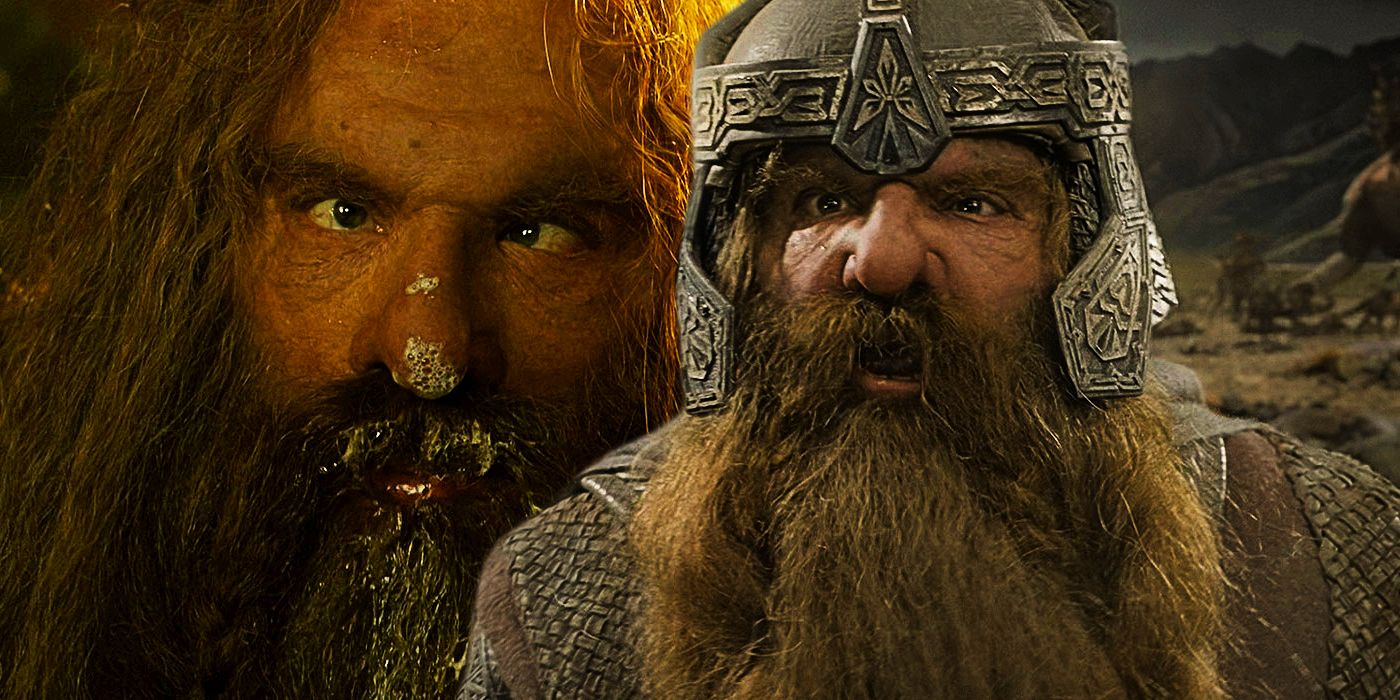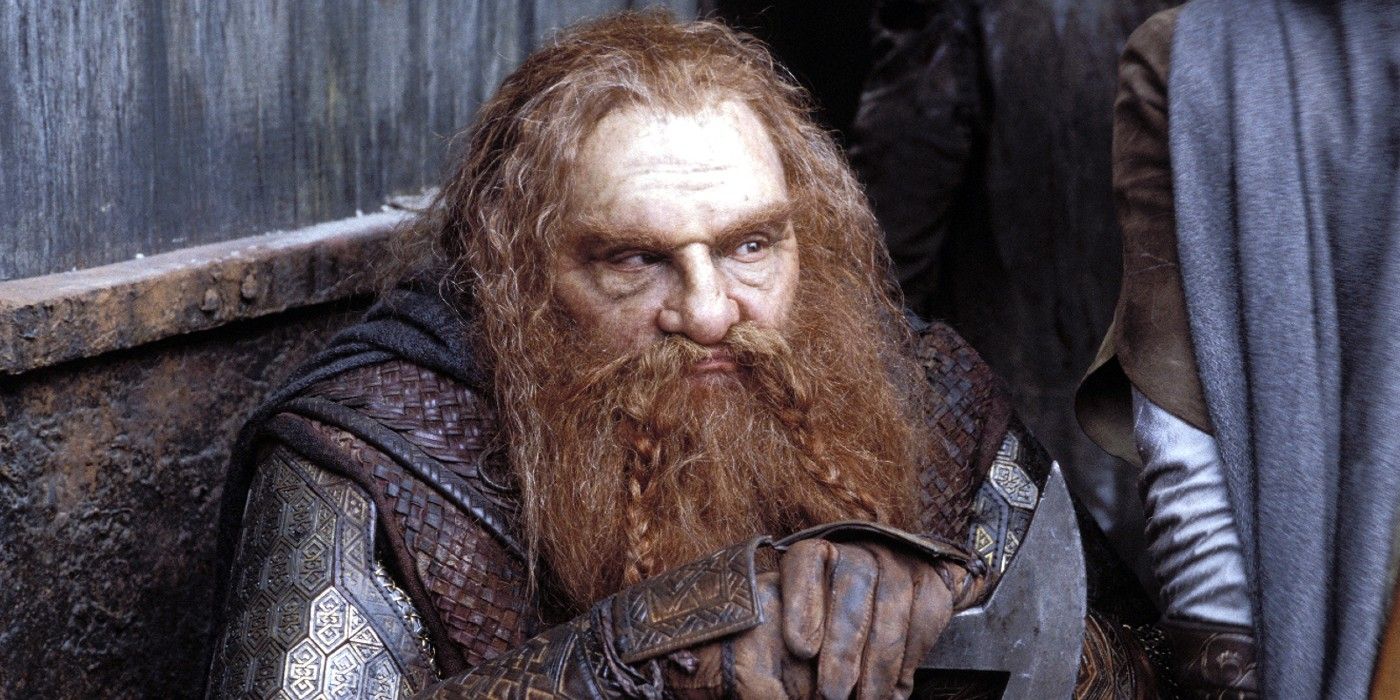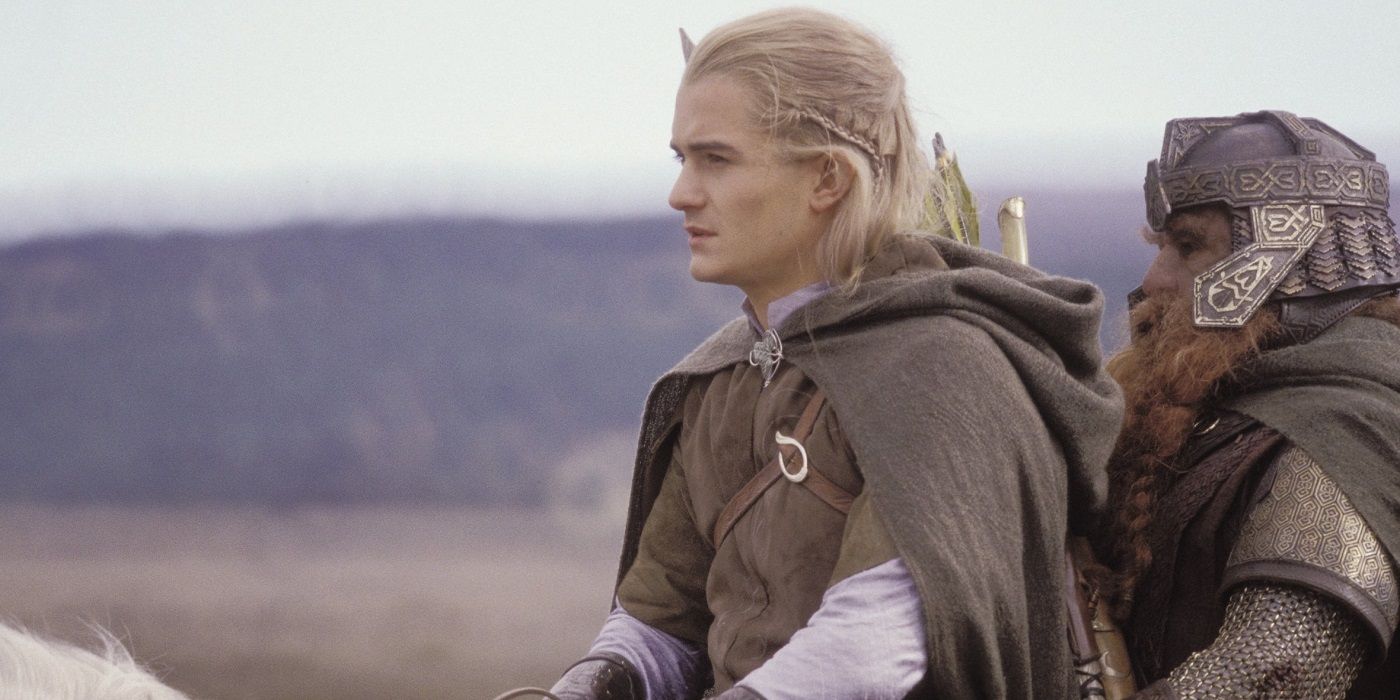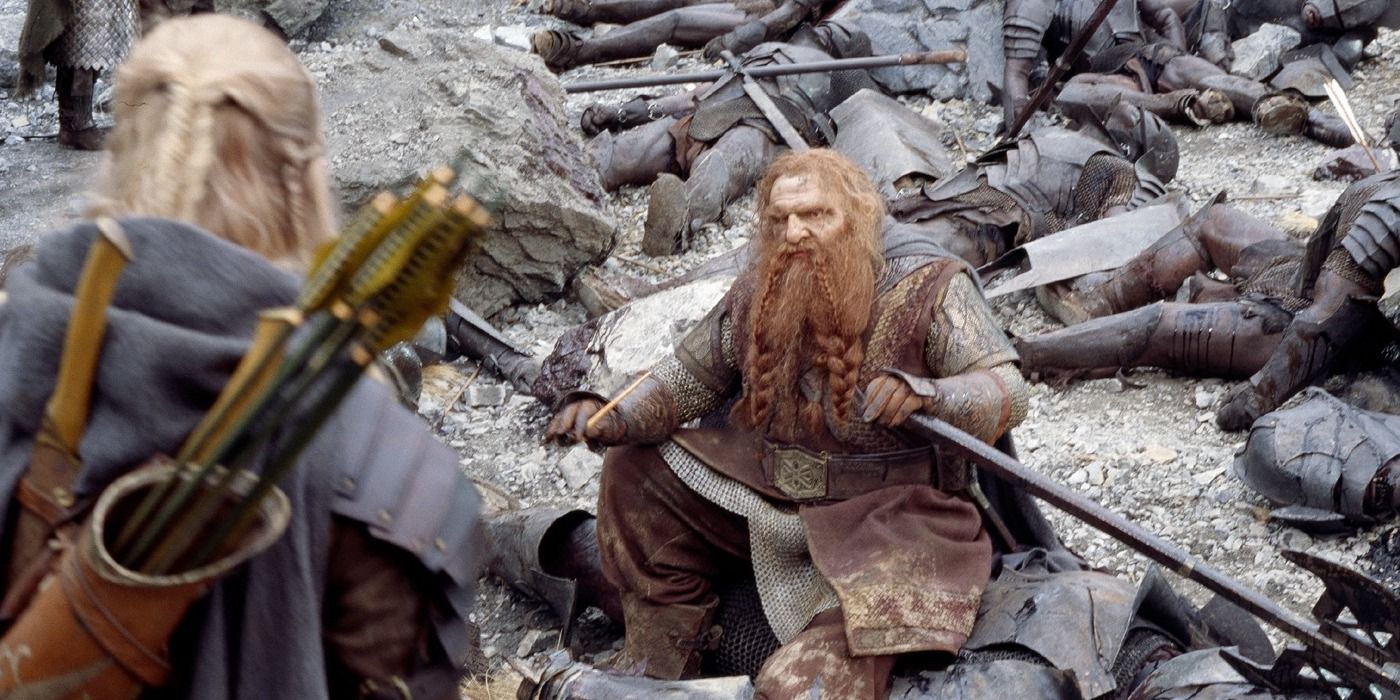Peter Jackson’s version of Gimli is not exempt from the criticisms of Tolkien loyalists; however, the changes to the character were essential for adapting The Lord of the Rings for the screen. Peter Jackson’s film trilogy is widely regarded as a triumphant adaptation of the source material. Any adaptation demands changes, but altering characters from a writer as revered as Tolkien has its challenges. This is most noticeable is the depiction of Gimli in Jackson’s The Lord of the Rings.
Gimli, son of Gloin, was the only dwarf in the fellowship. Upon meeting, he clashed with Legolas due to a long-standing grievance between elves and dwarves. Over the course of the three films (and books) the pair became friends. While competitive in battle, Gimli was both stubborn and loyal, and though some aspects of his personality were reconstructed, this was not a bad thing. If Gimli had been copied directly from Tolkien’s The Lord of the Rings, a crucial element of Jackson’s adaptation would have been missing.
Gimli’s role in Jackson’s trilogy was largely to act as comic relief. This was not a role he played in Tolkien’s novel, but perhaps he should have. Not only did this change add some much-needed levity to an increasingly dark story, it was not done at the expense of Gimli’s original character arc. Furthermore, Gimli’s defining stoicism in The Lord of the Rings books would have been difficult to translate effectively on-screen.
The Hobbits’ Trajectory From Comedy To Tragedy Is A Core Theme Of The Story
In The Fellowship of the Ring, a lot of the story occurred before Gimli was introduced. As such, it was the hobbits, especially Merry and Pippin, who acted as comic relief. They sang silly songs, obsessed over pints and mushrooms, and struggled naively through a world which was much larger than they were. However, their quips were reduced in The Two Towers, and were cut almost entirely from The Return of the King. Gimli, therefore, was required to take their place.
The loss of innocence in the wake of war is one of The Lord of the Rings’ key themes. When the hobbits were still in the Shire, an idyllic representation of home, they were quick to laugh and sing. However, as they left home and saw battle and death – just as Tolkien did in World War One – their cheery facades hardened. It would have been a betrayal of the story Tolkien was telling if Merry and Pippin were unaffected by trauma in Jackson’s version. However, while it was necessary to move the hobbits from comedy to tragedy, a comedic element was still required in certain places. Gimli was the obvious choice. In The Hobbit, the quirks of dwarves were explored by Tolkien. This was why Gimli’s humor worked in the cinematic version of The Lord of the Rings. Importantly, while his positioning as the butt of countless jokes may not have been a faithful reflection of Gimli’s novelistic counterpart, it was definitely coherent with Tolkien’s world.
Gimli’s Book Stoicism Wouldn’t Have Worked On-Screen
Legolas was the least explored character in Jackson’s The Lord of The Rings. It became a meme that the only line Legolas said to Frodo in the entire trilogy was, “And you have my bow.” When the fellowship disbanded, Aragorn, Legolas, and Gimli became the Three Hunters. To make each of the characters distinct here, Jackson played on Gimli’s penchant for one-liners. Aragorn and Legolas already had their places in this dynamic, meaning Gimli became the grumbling companion, muttering lines like, “I’m wasted on cross-country. We dwarves are natural sprinters.”
Gimli, who didn't return for The Hobbit, was often less somber than Legolas in the films. Had Jackson portrayed them both as severely as Tolkien, it would have made for fairly wooden viewing. What works on the page doesn’t always work on the screen. Gifting Legolas a comedic partner helped to add a much-needed second dimension to the elf. In Tolkien’s The Lord of the Rings, Gimli did spout the occasional comedic phrase. However, in the films, many of his funniest moments occurred as dialogue with Legolas. The act of counting kills during their battles was lifted directly from the book. Jackson heightened this with memorable quotes, such as, “That still only counts as one,” and, “He was twitching cos he’s got my axe embedded in his nervous system.” In scenes of carnage and death, the addition of a sense of humor was vital.
The Essence Of Gimli’s Character Is Translated Accurately In Peter Jackson’s Adaptation
Many of Gimli’s scenes in The Lord of the Rings books required a deep knowledge of Tolkien’s lore to understand. Peter Jackson cut sensibly in his adaptation of The Lord of the Rings, and these removals didn’t just revolve around Gimli. For example, Tom Bombadil’s inclusion would have offset the pacing of The Fellowship of the Ring and undermined the tone of the film. There were also more significant character revisions than Gimli’s; Faramir, for example, was not tempted to take the One Ring in the novels, but was a temporary antagonist in The Two Towers film. While Jackson’s Gimli was a tonal shift, he was very much the same character.
In The Fellowship of the Ring, Gimli requested the gift of a single hair from Galadriel (who will appear in Amazon's Rings of Power); she gave him three. There was a much deeper significance to this that was not addressed, but delving into the lore here would not have done the cinematic version any favors. Gimli’s devotion to Galadriel was continued through the novels, but was cut from the films. He threatened to kill Eomer for insulting her, but this aggression wouldn’t have translated well in the context of setting up a new ally. On a similar note, originally during the battle at Helm’s Deep, Gimli was driven into the caves. He gushed over their beauty, shocking Legolas with his sincerity. Again, this was cut from the film. In a visual medium, it would have been difficult to take a character delivering an earnest monologue about rock formations seriously, despite the purity of intentions.
Gimli still had serious moments in the Jackson’s The Lord of the Rings. In Moria, Gimli learned of the dwarves' fall and mourned over Balin’s tomb. He also delivered the news of Aragorn's death to a heart-broken Eowyn. In maintaining the overall integrity of the character, Jackson was able to play with a more light-hearted version of the dwarf elsewhere. Before the battle for the Black Gate, Gimli said, “Certainty of death, small chance of success, what are we waiting for?” This functioned perfectly as an illustration of his stubborn loyalty and selflessness, packaged memorably as a jest. While Jackson’s Gimli might have been funnier than Tolkien’s, both contributed equally to the legacy of The Lord of the Rings.




